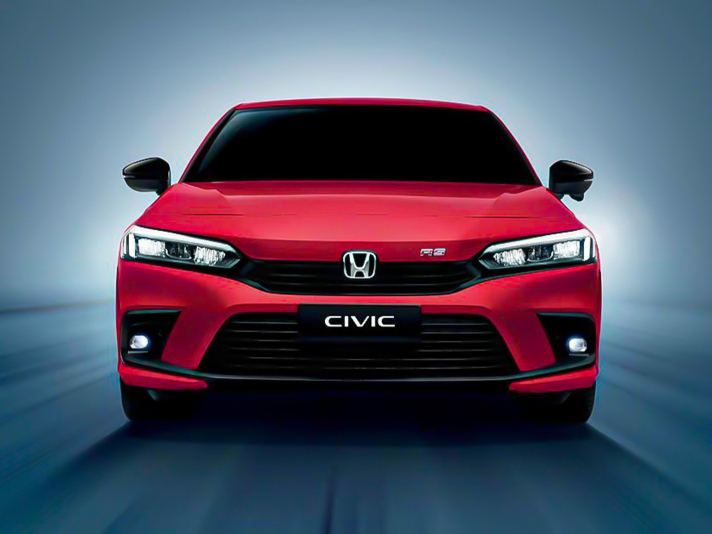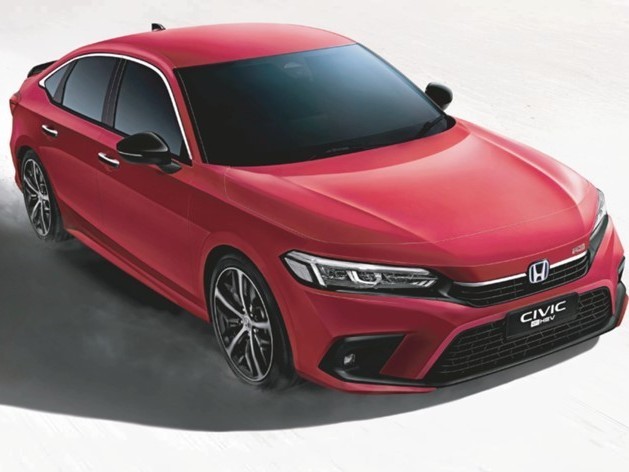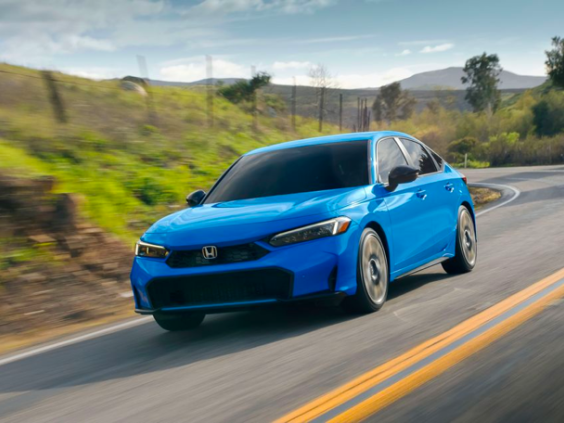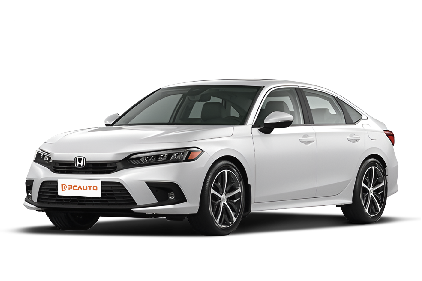Q
how much is the new honda civic type r
The all-new Honda Civic Type R has an official price tag in Malaysia ranging from approximately RM330,000 to RM350,000, though the exact figure might fluctuate based on optional extras or ongoing promotions. This high-performance front-wheel-drive hot hatch is powered by a 2.0-liter VTEC turbocharged engine, churning out 315 horsepower and 420 Nm of torque. Mated to a 6-speed manual gearbox and a limited-slip differential, it sprints from 0-100km/h in just 5.7 seconds.
As the performance flagship of the Civic lineup, the Type R carries forward the iconic red-top engine and triple-exit exhaust design. It also comes equipped with Brembo brakes and 20-inch lightweight alloy wheels. Notably, this machine holds the record for the fastest front-wheel-drive lap time around the Nürburgring Nordschleife, a testament to Honda's engineering prowess in engine tuning and chassis dynamics.
For Malaysian enthusiasts, the Type R isn't just a symbol of performance; it embodies Honda's unwavering commitment to driving pleasure. While its price edges close to some European performance cars, the distinctive VTEC soundtrack and immense aftermarket potential continue to draw a dedicated following. If you're interested, we recommend reaching out directly to your local authorized Honda dealer for the latest pricing and to schedule a test drive.
Special Disclaimer: This content is published by users and does not represent the views or position of PCauto.
Related Q&A
Q
What Segment Does Honda Civic Belong to?
The Honda Civic belongs to the C-Segment, which is in the compact car category. Compact cars typically have a body length ranging from 4.2 to 4.6 meters, focusing on being price - friendly, fuel - efficient, and convenient for daily use, with a design that balances practicality and driving pleasure.
The Honda Civic has a body length of about 4.6 meters. This size ensures ample interior space and handling flexibility. It offers a variety of power options, from naturally - aspirated to turbocharged engines, which can meet the needs of different consumers. The body design emphasizes aerodynamics and a modern look. With a young and stylish appearance, it's suitable for urban commuting and family trips. In the market, the Civic's direct competitors usually include other compact cars in the same class, such as the Toyota Corolla, Volkswagen Golf, Mazda 3, and Hyundai Elantra.
Q
What Is the Reslae Value of Honda Civic?
The Honda Civic maintains strong resale value in the used car market, consistently ranking among the best-retaining Japanese sedans in its class , particularly the newer tenth-generation (FC) and eleventh-generation (FK) models. Industry data shows Civic typically depreciates only 20%-30% over the first three years (depending on condition, mileage and market demand). For example, a 2020 Civic 1.5 TC originally priced around RM130k can still be priced at RM90k-RM100k in today's used market (varying by trim and maintenance history).
This exceptional value retention benefits from Honda's brand reputation, the appeal of its turbocharged engine (1.5L VTEC Turbo), and relatively low maintenance costs - though the base 1.8L naturally aspirated versions fetch slightly lower (yet still competitive) prices. Generally, low-mileage examples (under 15,000km annually) with complete service records and accident-free history are the most popular, while higher trims with Honda Sensing (like 1.5 TC-P) command premium resale prices over standard versions.
Additional factors affecting resale value include: preferred colors (white/gray being most popular), remaining factory warranty coverage, and aftermarket modifications (which may actually decrease value). Owners are advised to maintain regular authorized service center visits and keep complete documentation to maximize future resale potential.
Q
What's the Engine Displacement of Honda Civic?
The Honda Civic provides a variety of models with different displacements. The common displacements are 1.5L and 2.0L. When converted to CC (cubic centimeter, where 1L = 1000CC), they correspond to 1498CC and 1993CC respectively. The 1.5L models generally adopt the turbo - charged intake form, offering a fairly abundant power output, which can meet the needs of daily driving and some scenarios with certain power requirements. The 2.0L e:HEV RS model, on the other hand, is a gasoline - electric hybrid (HEV). It combines the advantages of the engine and the electric motor. While providing good power, it also boasts excellent fuel economy. Each model with different displacements has its own characteristics, and consumers can make a choice based on their own needs and preferences.
Q
What Engine Is Equipped by Honda Civic?
The Honda Civic offers multiple engine configurations. A common option is the 1.5L Turbo engine, featuring turbocharged intake with a displacement of 1498mL. It delivers a maximum horsepower of 182PS (134kW) at 6000rpm and peak torque of 240N·m between 1700-4500rpm. This inline-4 cylinder engine adopts an L-type cylinder arrangement.
Another available configuration is the 2.0L e:HEV RS, which utilizes naturally aspirated (NA) intake with a 1993mL displacement. The combustion engine produces 143PS (105kW) at 6000rpm and 189N·m of torque at 4500rpm. Combined with its electric motor, the hybrid system generates an additional 184PS (135kW) and 315N·m of torque.
These different engine options cater to varying consumer needs and driving preferences. The 1.5L Turbo provides robust power output, appealing to performance-oriented drivers, while the 2.0L e:HEV RS hybrid configuration balances adequate power delivery with superior fuel efficiency.
Q
What Is the Gearbox Type of Honda Civic?
The gearbox types of the Honda Civic vary depending on the model and year. Common transmission types include Continuously Variable Transmission (CVT) and Electronically Controlled Continuously Variable Transmission (E - CVT).
For gasoline - powered Honda Civic models, such as the 2025 Honda Civic 1.5L E, 1.5L V, and 1.5L RS, they are equipped with CVT. This type of transmission can provide a smooth driving experience and help optimize fuel efficiency. Unlike traditional transmissions, CVT doesn't have distinct gears and can achieve seamless changes in the transmission ratio according to driving conditions.
The 2025 Honda Civic 2.0L e:HEV RS is a gasoline - hybrid model, which uses E - CVT. This is specifically designed for hybrid vehicles. It combines the power of the engine and the electric motor, further improving fuel economy and providing a refined driving experience. The E - CVT manages the power distribution between the two power sources to ensure efficient operation in different driving scenarios.
Q
What Is the Pitch Circle Diameter of Honda Civic?
PCD (Pitch Circle Diameter) refers to the diameter of the central circle of the bolt holes in an automobile wheel hub. The PCD sizes of Honda Civic vary across different years and versions. Although the PCD dimensions may vary across different model years and versions of the Honda Civic, the given information does not explicitly specify the PCD. However, based on common wheel bolt-hole references for models like the 2022–2025 Civic, which have various tire sizes (e.g., 215/55 R16, 215/50 R17, 235/40 ZR18), the PCD in the Malaysian automotive market is typically 5x114.3mm—a widely compatible size.
For precise measurements, it is recommended to consult Honda authorized dealers or professional automotive workshops, as they can provide accurate PCD specifications for specific vehicle models.
Q
Is Honda Civic Equipped with Apple Carplay?
The currently available 11th-generation Honda Civic (Honda Civic 2023 FK) comes standard with Apple CarPlay wireless connectivity across the whole range (wired connection may also be retained in some models). Paired with a 9 - inch high - definition touchscreen, it seamlessly integrates navigation, music, and call operations for iPhone users.
As for the previous 10th - generation Civic (FC models), the mid - cycle facelift versions after 2019 (some 1.5 TC/TC - P models) also started to introduce Apple CarPlay. However, it should be noted that the early FC versions from 2016 - 2018 only support the Honda original system. If you want CarPlay, you may need to install a third - party module by yourself.
It is recommended that before buying a car, you confirm whether the function is available through the "Smartphone Connection" icon in the upper - right corner of the in - car screen or check the voice command button (with a microphone icon) on the steering wheel. If you're buying a used car, you can ask to test the compatibility by connecting your phone.
In addition, Honda Malaysia has been actively upgrading the in - car system in recent years. The new - generation Civic supports wireless Android Auto and maintains stable compatibility with the iOS system (it is recommended to use iOS 14 or later). In the future, system updates may further optimize the connection stability and response speed.
Q
What Is the Brand of Honda Civic's Tire?
The original - equipped tire brands adopted by the Honda Civic vary depending on different model years, vehicle types, and regional dealerships. Commonly, they include Michelin (such as Primacy 4 or Pilot Sport 4), Yokohama (like Advan dB or BluEarth - GT), and Bridgestone (Turanza T005A). These tires are characterized by their quietness, wear resistance, and wet - grip performance, which align with Honda's positioning for the Civic's well - balanced performance.
For example, the high - end 1.5 TC - P model might come with the higher - performance Michelin Pilot Sport series, while the entry - level 1.8S could be paired with more economy - oriented Yokohama tires. It's recommended that owners check the markings on the tire sidewall to confirm the specific model (e.g., 215/50 R17).
In addition, vehicles from different batches may have their tire brands changed due to supply - chain adjustments. If owners have higher requirements for the performance of the original tires, they can consult the authorized service center during maintenance or upgrade the tires on their own (such as choosing Continental or Goodyear). However, it's important to note that the tire size and load index must match the original specifications (most FK5 - generation models use 215/50 R17 or 235/40 R18) to ensure driving safety and maintain warranty rights.
Q
Is Honda Civic a Good Car? Learn the Pros and Cons Here
The Honda Civic is generally regarded as a good car with both advantages and disadvantages. Regarding its advantages, it has good performance. Some models are equipped with turbocharged engines, which can offer a pleasant acceleration experience. For example, the models equipped with a 1.5 - liter turbocharged engine can reach a maximum speed of 200 kilometers per hour. Its fuel economy is also quite good. The official combined fuel consumption of some models is about 6 liters per 100 kilometers, which helps to save the usage cost.
In terms of handling, the Civic benefits from its well - tuned suspension. The combination of the MacPherson front suspension and the multi - link rear suspension can provide a stable driving and riding experience and sensitive handling performance whether on city streets or highways. Safety performance is also one of its highlights. It comes standard with a series of safety features, such as multiple airbags, Anti - lock Braking System (ABS), and Electronic Stability Control, making you feel more secure on the road. The interior design is user - friendly, and the overall workmanship quality is usually reliable.
However, it also has some drawbacks. Some drivers may find the noise level, especially the road noise and wind noise at high speeds, a bit annoying. The rear - seat space may seem a bit cramped for taller passengers. In addition, compared with some competitors, its price may be relatively high. But overall, if you value performance, safety, and handling more than an absolutely quiet interior environment and the largest rear - seat space, then the Honda Civic is a good choice.
Q
What Is the Width of Honda Civic?
The width of the Honda Civic varies depending on different models and generations. Generally speaking, for the models listed here, the Honda Civic has a width of 1,802 millimeters. This dimension affects the vehicle's overall footprint on the road, affecting stability while driving, the space it takes up in parking lots and so on. It also has an impact on the interior space available to passengers. The wider the body, the more shoulder and elbow room passengers may have. Keep in mind that these dimensions may vary for newer or different versions of the Honda Civic.
Latest Q&A
Q
what bhp is a honda civic type r
The Honda Civic Type R, the poster child for high-performance front-wheel-drive hot hatches, has always had Malaysian petrolheads buzzing about its power. The current FL5 generation packs a 2.0-liter VTEC turbocharged engine churning out 315 horsepower and 420 Nm of torque. This powertrain, tweaked for better boost pressure and cooling efficiency, hits max horses at 6000rpm, while that meaty torque band stretches from 2200rpm all the way to 4000rpm—perfect for both track-day high-rev thrills and everyday street usability.
It’s worth noting that the Type R’s horsepower figures might dip slightly in Malaysia’s tropical heat. Blame it on the higher temps messing with intake air density for the turbo. But Honda’s engineers didn’t sleep on this—they upped the ante with a larger intercooler and improved cooling systems to counteract the heat.
For owners really looking to gauge the performance, keep an eye on wheel horsepower (whp) rather than just the crank numbers (bhp). With front-wheel-drive setups, you’re typically looking at around 15-20% driveline loss. That means roughly 250-270whp actually makes it to the tarmac, and that’s the number that truly reflects what you’ll feel behind the wheel.
Sure, rivals like the VW Golf R or Hyundai i30N come with all-wheel drive, but the Type R carves its own path in corners. Thanks to that front limited-slip differential (LSD) and specially tuned suspension, it serves up a unique handling character that’s earned it serious love on Malaysia’s mountain roads and Sepang Circuit alike.
Q
how to buy a honda civic type r
If you're looking to get your hands on a Honda Civic Type R in Malaysia, you've got two main paths: official authorized dealers or parallel imports. But honestly, I’d strongly recommend going through Honda Malaysia’s official dealer network first. Why? Because that way, you’re guaranteed the car meets local specs and you’ll get that all-important factory warranty – peace of mind is key with a performance machine like this.
First step: hop on Honda Malaysia’s website or give your nearest dealer a ring to check on Type R stock availability and pricing. These bad boys usually come in as fully imported (CBU) units, so keep an eye out for the latest FL5 generation – that’s the one you want. When you’re ready to pull the trigger, make sure you’ve got your ID, driver’s license, proof of income, and other necessary docs handy. You’ll also need to decide if you’re paying cash or financing – most dealers can help with loan options. Oh, and don’t forget to ask if you can snag a test drive first – you’ve gotta experience that VTEC kick in person!
Speaking of which, let’s talk about what makes the Civic Type R such a beast. Under the hood, you’ve got a 2.0-liter VTEC turbocharged engine cranking out a healthy 320 horsepower and 420 Nm of torque, mated to a slick 6-speed manual gearbox – proper driver’s car stuff. The suspension’s been track-tuned, and there’s an active damping system, so it’s setup for folks who live for tight corners and spirited drives. Just a heads-up though – that sporty chassis can feel a bit firm over some of Malaysia’s rougher road surfaces, so keep that in mind if you’re daily driving it.
Another thing to factor in: insurance and road tax for the Type R will definitely be steeper than your average Civic. It’s worth shopping around and getting quotes from a few insurance companies beforehand to avoid sticker shock.
Now, if you’re considering a parallel import, proceed with caution. Make *absolutely sure* the vehicle has a legitimate origin and that there’s local after-sales support available. But at the end of the day, the official channel is still the way to go for most buyers – you’re safer with the factory warranty and knowing the car’s been homologated for Malaysia. Trust me, when it comes to a high-performance car like this, that long-term peace of mind is priceless.
Q
why is honda civic type r so expensive
The Honda Civic Type R is priced at a premium primarily due to its high - performance positioning and unique technical specifications. Under the hood lies a 2.0 - liter VTEC turbocharged engine generating over 300 horsepower, paired with a track - tuned suspension and lightweight body design that truly make it a performance hot hatch. On top of that, the Type R comes loaded with high - end configurations like Brembo brakes, a limited - slip differential, and an aerodynamic package, all of which significantly drive up production costs. In the Malaysian market, being an imported model means the Type R is subject to hefty import duties and consumption taxes, further raising its sticker price. Add in its limited production run and the brand's premium cachet, and this contributes to its lofty pricing. For Malaysian car enthusiasts, the Civic Type R isn't just a car; it's a symbol of Honda's high - performance heritage. Its driving dynamics and track capabilities far surpass the regular Civic, so even with the higher cost, it continues to attract die - hard driving enthusiasts. It's also worth noting that the Type R holds its value pretty well in the used car market, which speaks volumes about its strong market reputation.
Q
what is a honda civic type r
The Honda Civic Type R is a high-performance hot hatch based on the regular Civic, but it's been fully upgraded to deliver an even more extreme driving experience, and it's a hit among performance car enthusiasts in the Malaysian market. Under the hood, it packs a 2.0-liter VTEC turbocharged engine cranking out 320 horsepower, mated to a 6-speed manual gearbox. Throw in a front limited-slip differential and adaptive dampers, and you've got handling that's just outstanding. Styling-wise, the Type R means business with that massive rear wing, wide-body kit, and those triple center exhausts—total aggression on wheels. Inside, the sport seats and red accents scream performance, no subtlety here. What makes the Civic Type R such a big deal in Malaysia is how it blends track-ready performance with daily usability. It'll tear up a track day on the weekend and then comfortably handle your daily commute without breaking a sweat. Oh, and let's not forget—this bad boy once held the front-wheel-drive lap record at the Nürburgring Nordschleife, proving Honda's serious chops when it comes to tuning performance. For Malaysian consumers who love modding and performance cars, the Civic Type R isn't just a car; it's a statement of Honda's relentless pursuit of driving fun.
Q
how to open proton persona dashboard
So, you need to take apart the dashboard on your Proton Persona, huh? First things first, grab the right tools—plastic pry tools or a screwdriver should do the trick. And *always* make sure the car's turned off to avoid shorting anything out. Start prying gently at the edges of the dashboard or around the air vents to release those plastic clips. Take it slow—you don't wanna crack any of the plastic bits. If there are screws holding things in place, obviously remove those first before prying. Oh, and keep an eye out for the wiring harness connected to the instrument cluster—you might need to disconnect the plug if it's in the way.
Most folks end up taking the dash apart to replace a bulb, fix the instrument panel, or upgrade the stereo. But honestly, if you're not comfortable with this stuff, it's smarter to hit up a Proton authorized service center. Messing around in there could accidentally trigger the airbags, and you definitely don't wanna void your warranty.
Funny thing, the Persona's dashboard design is pretty similar to other local models like the Myvi or Saga—they all use modular parts to make repairs easier. But every brand hides their clips and wires a little differently, so don't assume it's identical. If you're dead set on doing it yourself, check the owner's manual or chat with a pro tech first. Safety first, right?
View MoreRelated News

Honda Civic Interior Revealed: A Comprehensive Analysis of Civic’s Interior Charm
Kevin WongJul 10, 2025

Honda Civic Price Revealed: The Most Detailed Buying Guide!
AshleyApr 8, 2025

Whether it's about appearance or handling, why do young people all like Honda Civic?
WilliamSep 24, 2024

2022 Honda Civic: Hybrid car with the fastest acceleration, lowest fuel consumption, who says eco-friendly cannot be fast
JohnSep 3, 2024

2025 Honda Civic debuts, minor changes in appearance, has 1.5 Turbo model been discontinued?
LienMay 22, 2024
View More













 Cars
Cars


Pros
Cons